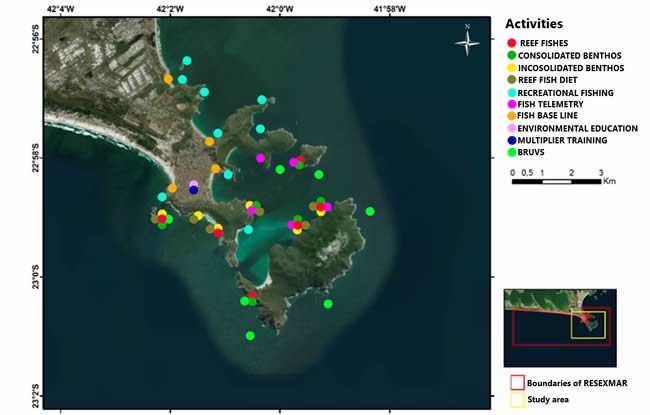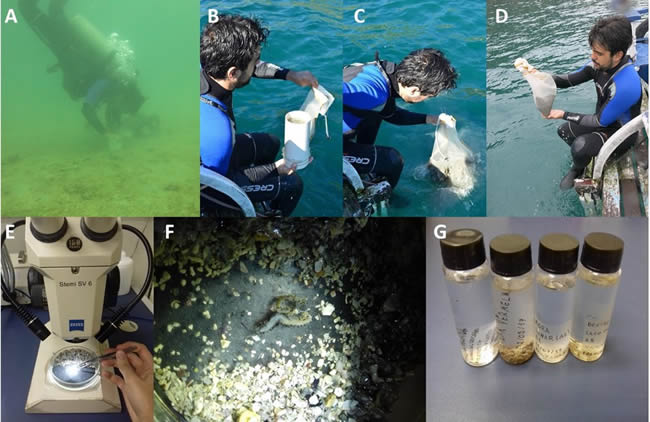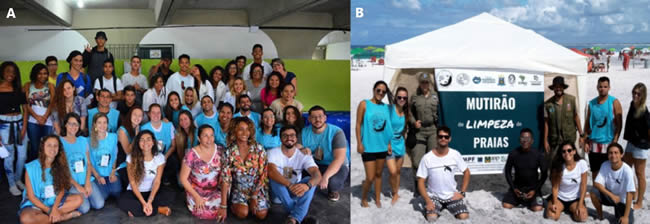|
The Rocky Reef Project
Arraial do Cabo is a socio-ecological strategic region that requires appropriate management for the sustainability
and continuous use of local resources. Due to oceanographic and geomorphological characteristics of the regional
coast, there is the occurrence of upwelling events, which increases fish production and provides a rich marine
biodiversity. In addition to the fishing activity, the region has an increasing population and intense aquatic tourism,
which have caused severe damage to the biodiversity and ecosystem services due to lack of appropriated
management.
In 2016, the Reef System Ecology and Conservation Lab (LECAR) received support of the Project to Support the
Marine Research and Fisheries of the State of Rio de Janeiro, under the responsibility of the Brazilian Biodiversity
Fund - Funbio, to develop the “Rock Reef Project - Subsidies for the RESEXMar Management Plan of Arraial do
Cabo” (Projeto Costão Rochoso). The project has important partnerships with federal universities, environmental
agencies and municipal departments of Arraial do Cabo.
The Rocky Reef Project has a multidisciplinary approach to investigate the reef system and their inter-relation with
human activities (Figure 1). The main technical-scientific objectives are survey of reef fish assemblies, description
of the spatial-temporal structure of the benthic community, investigate trophic associations between reef fish
(Figure 2) and the benthic community (Figure 3), select and propose intangible areas. In addition, the project will
also characterize the impacts of recreational activities (fishing and diving) and rescuing the traditional knowledge
associated to the fish stocks. The data raised will be used for ICMBio, the local environmental agency, in order to
elaborate an efficient management plan.

Figure 1. Map of activities conducted by Projeto Costão Rochoso in Arraial do Cabo.

Figure 1.A. Baited Underwater Video Station (BRUVS) being deployed during a survey to investigate fish diversity
and abundance in deeper regions. B. Frame from BRUVS videos for identification, counting and measurement of
the ichthyofauna.

Figure 2. Field and laboratory steps to search for organism associated with sediment. A. Sediment collection by a
SCUBA diver; B-D. Sample being washed using a mesh for further storage in alcohol. E-F. Sample being screened
under a microscope. G. Morphotyped organism into taxonomic groups.
The Rock Reef Project also aims to promote the communication between scientific community and generalpublic.
Public awareness is pursued through school campaigns, lectures, beach clean ups and interpretative underwater
trails. Additionally, it organizes courses about marine conservation and biodiversity for the youth, environmental
agents and teachers.

Figure 4: A. Group of volunteers, students and school staff during a school campaigns. B. Clean up event organized
by Project Rock Shore with support of Municipal Secretary of the Environment of Arraial do Cabo. |













